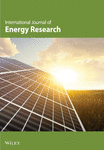Hydrocarbon gases and oils from the recycling of polystyrene waste by catalytic pyrolysis
Abstract
The yield and composition of oils and gases derived from the pyrolysis and catalytic pyrolysis of polystyrene has been investigated. The pyrolysis and catalytic pyrolysis was carried out in a fixed bed reactor. Two catalysts were used, zeolite ZSM-5 and Y-zeolite and the influence of the temperature of the catalyst, the amount of catalyst loading and the use of a mixture of the two catalysts was investigated. The main product from the uncatalysed pyrolysis of polystyrene was an oil consisting mostly of styrene and other aromatic hydrocarbons. The gases were found to consist of methane, ethane, ethene, propane, propene, butane and butene. In the presence of either catalyst an increase in the yield of gas and decrease in the amount of oil produced was found, but there was significant formation of carbonaceous coke on the catalyst. Increasing the temperature of the Y-zeolite catalyst and also the amount of catalyst in the catalyst bed resulted in a decrease in the yield of oil and increase in the yield of gas. Copyright © 2004 John Wiley & Sons, Ltd.




